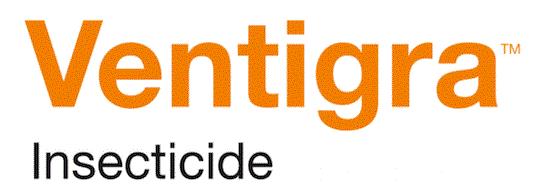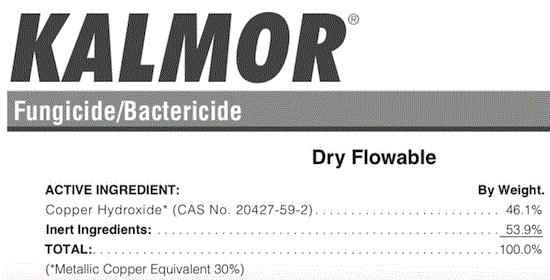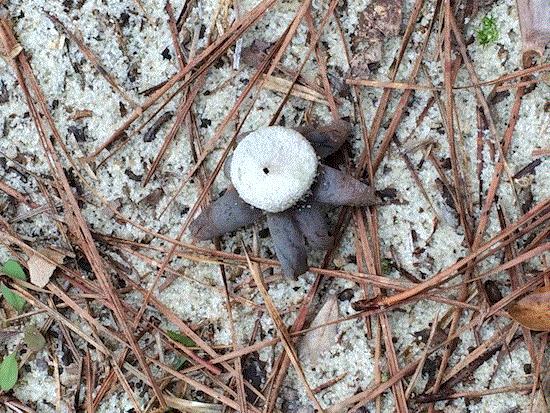BASF introduces Ventigra insecticide
March has been a busy month for new product introductions.
Ventigra insecticide is finally here. You probably heard people talking about this new insecticide at a trade show or meeting in past few months. BASF officially launched Ventigra insecticide on March 19, 2019.
The active ingredient of Ventigra is afidopyropen, which is a new chemical to the ornamentals market. It’s also branded as Inscalis in specialty and row crop markets. Afidopyropen belongs to IRAC Group 9, a.k.a. a chordotonal organ TRPV channel modulator. (Chewy name, I know.) More specifically, afidopyropen is classified as a Group 9D compound. The closest relatives of afidopyropen are pymetrozine (Endeavor) and pyrifluquinazon (Rycar), both of which belong to Group 9B.
When I was a wee lad, I learnt that Group 9 compounds (also included was flonicamid or Aria at the time, which is now classified in its own Group 29) are feeding blockers. The actual mode of action wasn’t well understood at the time, but it’s now known that Group 9 compounds are in fact nerve poisons that target Nan-Iav TRPV (Nanchung-Inactive Transient Receptor Potential Vanilloid) channel complexes in the chordotonal stretch receptor organs of insects. Chordotonal organs are located on the joints of the antennae, legs, wings, mouth and body segments of an insect. These organs allow an insect to know the position and movement of its body parts (kinesthesia, if you want to know the jargon); so, they are critical for hearing, gravity, balance, acceleration and proprioception. When afidopyropen binds to the TRPV channels, the normal functions of chordotonal organs are interrupted. As a result, insects lose their normal feeding, balance, movement and other behaviors.

Ventigra is registered for use on ornamentals, vegetable transplants and juvenile fruit and nut trees grown in greenhouses, shadehouses, nurseries, landscapes and interiorscapes. Target pests are aphids, whiteflies, mealybugs and scale insects. It is compatible with biological control agents and non-toxic to bees. Ventigra is to be applied by foliar spray and has translaminar activity (but no drench application). The re-entry interval (REI) is 12 hours, and the personal protective equipment (PPE) requirements are long pants, long sleeves, chemical-resistant gloves, shoes and socks. Check out BASF’s website for more information on Ventigra.
You probably noticed that BASF’s press release quoted me on my experience with Ventigra. Well, I think part of the reason for my “quotable” quality is that I started working with this product when it was still an experimental compound. The more likely part, however, is that I’m an egomaniac and prima donna that won't pass off a chance to show off.
Ventigra insecticide performed quite well in my trials. I don't want to bore you with all the tables, bar charts and statistics. So, I’m just going to summarize the results of my trials:
-
Ventigra provides quick knockdown of aphid and whitefly populations. When applied at the label rates of 1.4 fl. oz. per 100 gallons against aphids and 7 fl. oz. per 100 gallons against whiteflies, this product reduced 59% of aphids and 73% of whiteflies within three days of application, and provided 100% control of aphids and 97% control of whiteflies at 28 days after application.
-
Ventigra is a strong rotation partner of products used against aphids and whiteflies, including systemic insecticides. One foliar application of Ventigra at 7 fl. oz. per 100 gallons achieved control of whitefly population identical to that of one foliar application of Mainspring at 4 fl. oz. per 100 gallons up to 28 days.
-
Ventigra is a viable alternative to drench treatment of neonicotinoids for whitefly and aphid management. Two foliar applications of Ventigra at 1.4 fl. oz. per 100 gallons and at a 28-day interval achieved control of aphid population identical to that of one medium drench with Marathon II (at 1.7 fl. oz. per 1,000 6-inch pots).
-
Ventigra provides suppression of mealybugs and scale insects. I suggest using Ventigra as a rotation partner, not as a standalone tool, in mealybug and scale insect management plans.
And, yes, you can quote me on that.

OHP introduces Kalmor fungicide/bactericide
Kalmor fungicide/bactericide is a new addition to OHP’s biosolutions line of products for ornamental growers. Kalmor contains copper hydroxide, which has efficacy against a wide range of fungal and bacterial diseases, such as alternaria, anthracnose, botrytis, cercospora, downy mildew, erwinia, pseudomonas and xanthomonas. This product is OMRI-listed, and labeled for use on vegetables, herbs, ornamentals, conifers, and fruit and nut trees grown in greenhouses, shadehouses and nurseries. Kalmor can also be used to control algae in non-residential turf (golf courses, sod farms, cemeteries and industrial sites).

Without PPE, the REI is 48 hours. Early entry requires proper PPE (coveralls, chemical-resistant gloves, shoes, socks and protective eyewear), and may be reduced to 24 hours in greenhouses under certain conditions (check label). The pre-harvest interval is 0 days. When water pH is less than 6.5, Kalmor may cause phytotoxicity on certain sensitive plant species. Do not tank mix Kalmor with fungicides containing aluminum, such as Aliete and Areca, in order to avoid phytotoxicity.
There are several copper-based fungicides and bactericides in the market, such as copper hydroxide (Champ, CuPRO, Kocide, Nu-COP; Junction contains copper hydroxide and mancozeb), copper octanoate (Camelot O), copper sulphate pentahydrate (Phyton 27, Phyton 35) and tribasic copper sulfate (Cuproxat). Kalmor differs from these products in its formulation. According to Carlos Bográn, OHP’s Manager of Technical Services, Kalmor has smaller particle size than other copper-based products. That means there are more copper ions in the solution, which makes Kalmor effective at a lower rate.

Concise PGR registered in Canada
Fine Americas introduced Concise plant growth regulator (contains 0.055% uniconazole-p) to Canada in early March. In Canada, Concise is registered for greenhouse production of poinsettia, chrysanthemum, Easter lily, geranium (except for cranesbill geranium) and various herbaceous bedding plants. Different from the U.S. label, which allows application as foliar or media sprays, drenches or dips (for bulbs and liners), the Canadian label allows only foliar spray. The Canadian label also prohibits application through fogging, mist blowers and airblast equipment. The REI is 12 hours. Visit Fine Americas for more info on Canadian registration, label, SDS and trial results of Concise.

Uniconazole-p is a triazole plant growth regulator that inhibits gibberellin synthesis. Known as Concise or Sumagic, the compound has been used in the U.S. for quite some time. Not trying to date myself, but I used Sumagic when I was in graduate school!
Uniconazole-p has been a valuable tool for growers south of the border for many years. Growers use uniconazole-p to limit internode elongation and produce more compact plants. Consider this: compact plants = more plants per load = greater shipping efficacy.
Concise is extremely active, even at a low dose. Users should be very careful in diluting and applying the product so that the right amount is applied to the target plants in the appropriate growth stage. Joyce Latimer of Virginia Tech and Brian Whipker of North Carolina State University, whom I have also known since graduate school, wrote a great bulletin on how to use Concise. I recommend this bulletin (available from Fine Americas) to anyone who is using or considering Concise. Also, check out the latest GrowerTalks plant growth regulator guides for perennials and annuals.
Now, I’ll just sit back and wait for Joyce or Brian to take the “known them since graduate school” bait.

Fun stuff from JC’s back yard
I’ll leave you with a fun little puffball mushroom I found on my driveway, while walking my wife’s dog, Sake. We have had quite a bit of rain in our neighborhood this winter, so it’s mushrooms galore! They’re a lot more fun than the yellow pine pollen that covers everything.
I didn't have my good friend (and cousin by marriage), Vincent, to tell me what species it was at the time. In reality, I won't put too much faith in Vincent’s mushroom identification skills because this crazy Frenchman only cares and knows the big edible kinds (lion’s mane and oyster mushrooms are his favorites). Certain puffballs are edible but often overlooked.
Without Vincent, I turned to Google Images to meet my mushroom identification need. Looks like I found an earthstar. I’m not foolish enough to try to identify the species using Google Images, so I’m just going to leave it at that. (So, please don't put me on your list of “incorrigibles”, my mycologist friends.)

See y'all next time!

JC Chong
Associate Professor of Entomology at Clemson University
This e-mail received by 24,985 subscribers like you!
If you're interested in advertising on PestTalks contact Kim Brown ASAP!